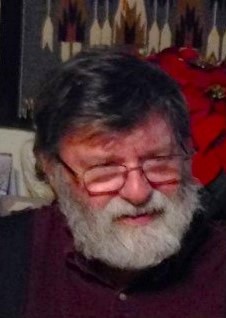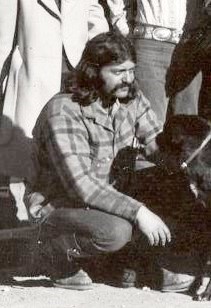In Memoriam: Dr. Richard Carl Chapman
Departmental News
Posted: Aug 01, 2024 - 12:00pm

Dr. Richard “Dick” Chapman, former Director of UNM’s Office of Contract Archaeology and Research Associate Professor Emeritus in the Department of Anthropology, passed away on June 25, 2024. Dr. Chapman was a pioneer in cultural resource management archaeology in New Mexico. His interests and expertise spanned virtually the entire pre- and post-contact history of the state, with particular emphasis on changes in cultural adaptations during the Archaic and Puebloan periods.
 Over the course of his career, Dr. Chapman authored or co-authored 57 major reports, 72 contributed chapters, and 60 small reports, articles, and presented papers. In contrast to the traditional academic career track, most of Dr. Chapman’s research was conducted on projects undertaken to comply with federal and state cultural resource management laws.
Over the course of his career, Dr. Chapman authored or co-authored 57 major reports, 72 contributed chapters, and 60 small reports, articles, and presented papers. In contrast to the traditional academic career track, most of Dr. Chapman’s research was conducted on projects undertaken to comply with federal and state cultural resource management laws.
As the son of Carl H. Chapman, the prominent Missouri archaeologist, Dick was literally born into the archaeological community. He was an experienced excavator before coming to the University of New Mexico as an undergraduate, and he supervised excavations in the northern Rio Grande area for the Museum of New Mexico’s Laboratory of Anthropology while working toward a bachelor of arts degree in English Literature, which he received in 1966.
Dick then went on to pursue both master of arts and doctoral degrees in anthropology at UNM, the former granted in 1969 and the latter in 1980. While in graduate school, he directed the Toadlena Highway Salvage Project for the Laboratory of Anthropology, and worked with Douglas W. Schwartz on the excavation and reporting of sites in the Unkar Delta area of Grand Canyon National Park. Subsequently, he began work as a supervisory archaeologist and lithic analyst at the newly established Office of Contract Archaeology (OCA) at UNM in the fall of 1973. After working on several smaller projects, Dick was selected as field director and later as co-director, with his future wife Jan Biella, of a multi-year survey and excavation project in the Cochiti Reservoir flood pool. This research was, in part, the basis for his dissertation, and the four-volume report of that project remains a seminal work about pre-contact settlement and subsistence in the middle Rio Grande valley of New Mexico.
After receiving his PhD degree, the newly-minted Dr. Chapman directed multiple survey and excavation projects in northwestern New Mexico for the contract archaeology program at the School of American Research, and a major sample survey of the Gila and San Francisco watersheds in southwestern New Mexico for Deuel and Associates. He also formulated the research problems and data recording procedures for a survey of the lower Rio Puerco Valley performed by Human Systems Research. The latter two projects – conducted by some of the earliest private archaeological firms in New Mexico – reinforced Dick’s interest in what would today be termed landscape archaeology.
Dr. Chapman returned to OCA as its Assistant Director in 1983, and he was promoted to Associate Director in 1986. In 2000, he became OCA’s Director, a position he held until his retirement in 2012. Among the scores of projects that Dick directed during this period, three are especially significant in terms of their research contributions. Two of those were large surveys on the White Sands Missile Range that greatly expanded our understanding of pre-contact settlement patterns in south-central New Mexico. The third was a survey, testing, and ethnography program at Fort Wingate. This project investigated the Chaco-affiliated great house community and the post-Chacoan reoccupation of that community during the Pueblo III period. This project also documented the economic and social determinants of historic Navajo settlement changes in the Fort Wingate area from the late 1800s through the 1930s.
Dick remained committed to the pursuit of archaeological research in the context of CRM projects throughout his long tenure at OCA. In planning each of his projects, he defined research objectives tailored to the archaeology of the project area and consistent with the scope, management objectives, and legal requirements of the undertaking. He was a meticulous, insightful archaeologist, and he insisted that all of OCA’s work maintained this high standard.
Because OCA was affiliated with UNM, Dick felt strongly that it should contribute to the university’s educational mission. He hired students for projects whenever possible and devoted considerable time to mentoring his project directors and crew chiefs. He had the rare ability to lead a project team without dictating. He was quick to praise good work and encouraged initiatives and innovation by the staff, but he readily checked undue enthusiasms by asking such pointed questions as “Do you really have the evidence to support that interpretation?”
Dick’s appointment as a Research Associate Professor in the Anthropology Department also offered him the opportunity to teach occasional introductory and Southwestern archaeology courses and to serve on graduate committees. He regularly taught graduate seminars in cultural resource management and was instrumental in establishing a master of arts public archaeology program within the department.
Dick was widely respected for his professionalism and absolute integrity. He had an open, easy-going personality, and he was empathetic and straight forward in dealing with everyone from students and staff to clients and government officials. He also had a wonderful sense of humor that he employed freely and an informal style, which made his conference presentations and public lectures as enjoyable as they were informative.
Dick is survived by his wife and professional partner of 50 years, Jan V. Biella; their sons Scott Chapman and Daniel Chapman and Daniel’s wife Ashley Lynn Carlson; Dick’s son by his first marriage to Leslie Marmon Silko, Robert Chapman, and his wife, Ying Xu; and four granddaughters.
The family is planning a memorial gathering for friends and colleagues later in the year.
